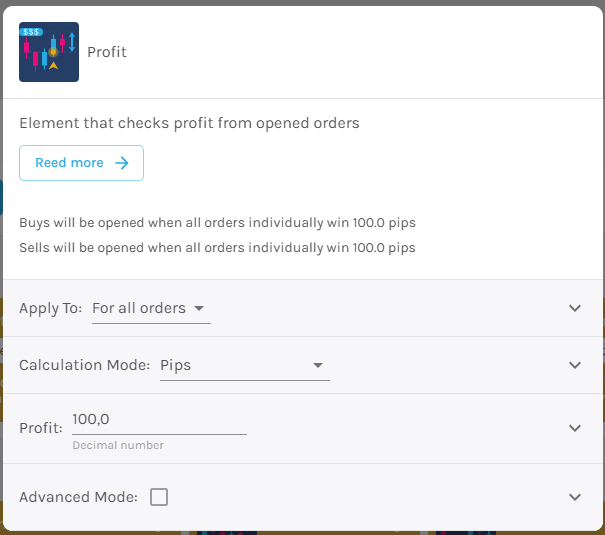Definition #
Profit is the amount of money earned on trades that is now part of your available account balance. It’s the “net” profit you can see as an increase in your capital after all profitable trades have been closed and losses and costs have been accounted for. It could be interpreted as the Take Profit (TP), which is the point you set as the maximum loss on your trade. Once it reaches that price, the trade is automatically closed.
Interpretation #
It can be interpreted in three ways:
- Cash – This would be the profit obtained in the currency being used (e.g. € or $).
- Pips – A pip is the smallest movement an asset can make. For most currency pairs, a pip is the fourth decimal place (0.0001). For example, if EUR/USD rises from 1.1000 to 1.1001, that is a movement of 1 pip. For some pairs involving the Japanese yen (JPY), a pip is typically the second decimal place (0.01), for example, if USD/JPY rises from 135.00 to 135.01, that is a movement of 1 pip.
- Percentage – Based on the money you had available before the transaction or the money initially deposited into the account.
Profit is important for many reasons:
- Funds Availability: Indicates how much real money you have available to withdraw or use in future transactions.
- Measure real profitability: Shows the net profit after all costs, giving a more accurate picture of the profitability of the trading activity.
- Capital management: Knowing how much cash profit has been generated helps you make capital management decisions, such as how much risk to take on next trades or when to cash out profits.
- Performance Evaluation: While cumulative profit shows the total earnings over time, cash profit reflects the actual money that has been realized.
Parameters #

Signal type
The element can operate in two modes. In trigger mode, it provides a signal the instant the element condition occurs. At all other times, even if the condition persists, trigger mode will not provide further signals (until a new condition is reactivated). In filter mode, it will provide a signal as long as the element is generating a signal.
These are the 2 options:
- Filter: while the signal is produced
- Trigger: at the moment the signal is produced.
NOTE: It is recommended to keep only one element with trigger signal type per rule, and the rest of the rule elements (optional) as filters.
Parameters configuration
Applies to – It will be applied on three occasions:
- Order: It will apply unitarily for each order.
- For all orders: It will apply when all individual orders lose or win at least the specified amount.
- All orders: Will apply when all orders win or lose at least the specified amount.
Calculation Mode – It will be calculated in the form of pips, cash, active percentage or percentage of the account.
Profit – Amount of benefit to be applied.
Modo avanzado: Timeframe – Selecciona el Timeframe sobre el cual se aplicará el elemento. Estas son las opciones:
- Current: This refers to the timeframe associated with the strategy to be validated. For example, if our strategy is associated with the EURUSD in 15 minutes, the current timeframe will be 15 minutes. If we want to use this element with a different timeframe than the one used in the strategy, we can set it with the rest of the options.
- 1 min: 1 minute timeframe.
- 5 min: 5 minute timeframe.
- 15 min: 15-minute timeframe.
- 30 min: 30-minute timeframe.
- 1 hour: 1 hour timeframe.
- 4 hours: 4-hour timeframe.
- 1 day: 1 day timeframe.
- 1 week: 1 week timeframe.
- 1 month: 1 month timeframe.